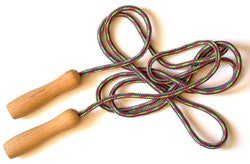A new handbook helps California teachers teach P.E. in accordance with state guidelines.

Titled "Physical Education Framework for California Public Schools," it envisions a generation of students who will become active and fit young adults as a result of the lifelong lessons they've learned both inside and outside their alma maters' gymnasiums. "We're not looking to create superstar athletes," Deborah Franklin, a state education programs consultant who helped draft the document, told the Whittier Daily News. "We just want to help lead children to be physically active, healthy people throughout their lives - even if it's as simple as, 'If you eat that many calories, you have to expend this much energy.' "
To that end, the new framework (www.cde.ca.gov/ci/pe/cf) is based on the premise that every student can benefit from participating in a comprehensive, inclusive and sequential physical education program. Developed with significant input from public school physical education teachers, the document provides real-world examples of how standards-based lesson plans can be structured and how student progress can be monitored via assessments or report cards. Some school districts also have received state grants to provide full-time roving instructors and other additions that will bulk up their physical education departments.
Meanwhile, on the opposite coast, the labor organization New York State United Teachers argued in front of a state-government committee earlier this year that physical education is essential to helping students better focus on their schoolwork. "In this day of mandated testing under the federal No Child Left Behind Act, physical education should be viewed as a key to giving students the edge to succeed," NYSUT vice president Maria Neira told the state Assembly's education committee in January.
In a recent NYSUT survey of its 585,000 members, only 10 percent of respondents indicated that kindergarten through third-grade students in their district receive physical education on a daily basis, as required by the state. Only one-third of respondents said their school districts provide adequate facilities for teaching physical education, and nearly a quarter claimed that their districts sometimes consider recess as "physical education" for students in kindergarten through sixth grade. (The state's learning standards do not recognize recess as instructional time, the NYSUT says; therefore, it cannot be a substitute for an actual P.E. class.)
The NYSUT urged New York lawmakers to put more muscle behind enforcement of its physical education regulations by including information about P.E. classes on report cards, strengthening monitoring capabilities to ensure local school districts comply, making physical education requirements an essential part of new-teacher training and creating a core curriculum to provide a uniform framework for physical education instruction at all grade levels - not unlike what the California Department of Education just did.
































